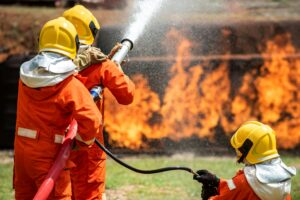Flammable Gases Reintroduction: Understanding the Risks and Benefits


Flammable gases are an essential part of modern industries and daily life. However, reintroducing these gases into new sectors or products requires careful consideration. This article explores the risks, benefits, and safety measures involved in reintroducing flammable gases. We also discuss how industries manage their use and the safety and environmental impact implications.
The Growing Demand for Flammable Gases
Flammable gases like propane, butane, and methane have long been used for heating, cooking, and energy production. There has been a growing demand for these gases in various sectors in recent years. New technologies and advancements in energy production have led to an increased need for alternative fuels, which often include flammable gases.
The push for cleaner energy sources also drives the demand. Natural gas, for example, is considered a bridge fuel because it burns cleaner than coal and oil. As industries strive to reduce their carbon footprints, reintroducing flammable gases can play a key role in meeting energy needs while reducing environmental impact.
Understanding the Risks of Reintroducing Flammable Gases
While reintroducing flammable gases offers numerous advantages, it also presents significant risks. The primary concern is safety. Flammable gases are highly volatile and can cause severe accidents if not handled properly. A leak in a pipeline or container can lead to fires or explosions.
For this reason, strict safety standards are in place for storing, transporting, and using flammable gases. However, human error, mechanical failure, and earthquakes can compromise safety measures.
Another significant risk is the environmental impact of the increased use of flammable gases. Although they may be cleaner than coal, methane and other gases are potent greenhouse gases that contribute to global warming. Methane, in particular, is much more harmful than carbon dioxide when released into the atmosphere.
Advances in Technology for Safer Use
Technological advancements have significantly improved the safety of using flammable gases. Innovations in leak detection, pressure control, and gas containment systems have made monitoring and managing flammable gases easier. Smart sensors and remote monitoring systems are now widely used in industries to detect leaks and prevent accidents before they occur.
Additionally, modern gas storage facilities have advanced safety mechanisms, such as flame arrestors and pressure relief valves, to prevent catastrophic incidents. Many industries have also embraced automation, reducing the need for human intervention and minimizing the risk of human error.
Balancing Benefits with Environmental Responsibility
Reintroducing flammable gases into industries and everyday use must be done with environmental responsibility. As much as these gases offer energy solutions, they also have an ecological cost. Efforts to minimize the environmental impact of gas production and use are increasingly important.
Many countries and companies are adopting measures to reduce methane leaks during production and transportation. These measures include repairing leaks, upgrading old infrastructure, and using advanced sealing technologies. Carbon capture and storage (CCS) technologies are also being explored to mitigate the environmental impact of natural gas production.
Regulations and Industry Standards for Safe Gas Use
The safe reintroduction of flammable gases depends on compliance with regulations and industry standards. Governments worldwide have established strict guidelines and rules for using flammable gases safely. These regulations cover everything from transportation and storage to disposal and emissions.
For example, the Occupational Safety and Health Administration (OSHA) sets safety standards for industries that use flammable gases in the United States. The National Fire Protection Association (NFPA) also provides safe handling and storage guidelines. Compliance with these standards is crucial for preventing accidents and ensuring the safety of workers and the public.
In addition to national regulations, international standards are essential in ensuring that the global use of flammable gases remains safe. The International Organization for Standardization (ISO) and the American National Standards Institute (ANSI) are among the leading bodies that set global standards for the use of flammable gases.
A Cautious but Promising Future
Reintroducing flammable gases into new sectors or products offers both challenges and opportunities. On the one hand, these gases can provide cleaner energy solutions and support industries transitioning away from fossil fuels. On the other hand, their volatile nature requires strict safety measures to prevent accidents and protect the environment.
With advances in technology, stringent regulations, and a growing focus on environmental responsibility, the future of flammable gases can be promising. However, their use must be carefully managed to ensure the benefits outweigh the risks.
Ultimately, the responsible reintroduction of flammable gases can play a crucial role in meeting global energy demands while protecting human safety and the environment. The key lies in finding the right balance between innovation, safety, and sustainability.
